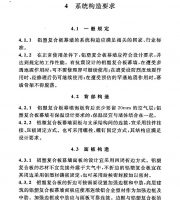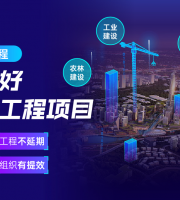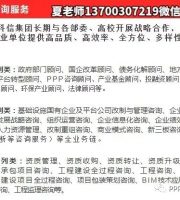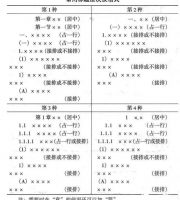【 Yang Bei, lawyer of Xi’an construction engineering, Tel / wechat 15829634771] typical case: the retrial applicant Dalian Hengda Machinery Factory and the respondent Pulandian Hongxiang Real Estate Development Co., Ltd., the defendant of the first instance and the appellee of the second instance, Dalian Chengda Construction Service Co., Ltd., Zhao Xuejun Dalian Boyuan Construction Group Co., Ltd
.
construction contract dispute case [Supreme People’s Court (2015) minshenzi No
.
919 civil ruling, 2015.5.12] [essence of judgment] the Supreme People’s court held that: the focus of dispute in this case is whether Hongxiang company should bear joint and several liability within the scope of unpaid project price
.
In this case, Hengda Machinery Factory and Chengda Company signed a steel beam production and installation agreement, and both parties have the engineering contract relationship of steel beam production and installation project
.
Chengda Company obtained the involved project from Boyuan company through subcontracting, and both parties signed a project contract
.
There is a general contract relationship between Boyuan company and Hongxiang company
.
It can be seen that there is no contract relationship between Hengda Machinery Factory and Hongxiang company
.
According to the principle of relativity of contract, Hengda Machinery Factory should claim rights from Chengda Company
.
According to Article 2 of the interpretation of construction contract of construction project, the court of first instance ordered Chengda Company to bear the responsibility of repaying the project price, which is correct in the application of law
.
Now Hengda Machinery Works breaks through the relativity of contract and claims the right to Hongxiang company, which is based on the second paragraph of Article 26 in the interpretation of construction contract of construction engineering
.
The paragraph stipulates: “if the actual construction contractor claims rights with the employer as the defendant, the people’s court may add the subcontractor or illegal subcontractor as the party to the case
.
The employer shall only be liable to the actual constructor within the scope of the project price owed
.
” The first paragraph stipulates: “if the actual constructor brings a lawsuit with the subcontractor or illegal subcontractor as the defendant, the people’s court shall accept it according to law.” Comparing with the content of the second paragraph, we can see that the first paragraph should apply in principle when the actual constructor brings a lawsuit for the project payment, and the basic principle of law application is not to break through the same relativity; The second is a special provision to break through the relativity of contract, which aims to protect the legitimate rights and interests of migrant workers
.
The actual construction person refers to the illegal acts such as subcontracting, illegal subcontracting and dismembering contracts
.
The construction contract is deemed invalid, and the actual construction person is the actual construction person, which is different from the legal construction body such as the construction person, the contractor and the construction enterprise
.
The interpretation of construction contract of construction project uses the concept of actual construction person
.
The actual constructors may be natural persons, construction enterprises with super qualification level, labor subcontracting enterprises with super qualification permission scope engaged in engineering foundation or structure construction, etc
.
From the perspective of the personnel composition of the actual construction personnel, the actual construction personnel in the construction site are mostly migrant workers
.
The actual construction contractor and its employer form a construction contract relationship
.
The internal legal relationship of the actual construction contractor is the labor contract relationship or the labor contract relationship
.
The wages or labor remuneration of migrant workers account for a high proportion in the project funds, and most of them are the basic living security costs of migrant workers
.
Therefore, the second paragraph of Article 26 of the interpretation of construction contract of construction project stipulates that the actual constructor is allowed to break through the relativity of the contract and claim the project arrears from the employer under special circumstances
.
Hengda Machinery Factory obtained the steel beam production and installation project through the steel beam production and installation agreement signed with Chengda Company
.
According to the contract, it was required to provide steel beam production, transportation, installation and other operations, and contracted labor and materials
.
It can be seen that what it provided was professional technical installation project, not ordinary labor operation, and the project payment owed was not labor subcontracting cost, It does not meet the applicable conditions specified in the second paragraph of Article 26 of the interpretation of construction contract for construction projects
.
The steel beam project contracted by Hengda Machinery Plant according to the contract is only part of the construction content in the construction contract between Hongxiang company and Boyuan company, which is an illegal subcontracting project and is not a full performance of the contract between the employer and the contractor
.
Therefore, it is not in line with the provisions of Article 26 of the interpretation of construction contract of construction engineering, and it is not improper for Hongxiang company to bear joint and several liability in the first and second trials
.
As for whether Hongxiang company is aware of the subcontracting, it does not affect the outcome of this case
.
Case analysis: the second paragraph of Article 26 of “interpretation of construction contract of construction project” should be strictly applied
.
In the trial practice, on the one hand, when many actual constructors sue the project payment, they first choose to sue the employer rather than the opposite party of the contract (subcontractor, illegal subcontractor), or take the subcontractor, illegal subcontractor and employer as the joint defendants without distinction
.
This practice not only goes against the basic principle of contract relativity, It is also inconsistent with the intention of Article 26 of the interpretation of construction contract
.
On the other hand, some judges also simply believe that if the actual construction contractor sues the employer, the employer must bear joint and several liability with the Contractor as long as there is the fact that the employer owes the project payment
.
Sometimes they even think that the employer has the ability to compensate, so they include the employer into the compensation subject according to the second paragraph of Article 26
.
This kind of understanding and practice not only ignores the judicial value and purpose behind the judicial interpretation, but also easily leads to arbitrariness and broadness in the application of the second paragraph of Article 26, which is contrary to the basic principle of contract relativity, and may further worsen the construction market
.
In the face of some problems in reality, the Supreme Court must establish the concept of adhering to the principle of contract relativity, further clarify the applicable conditions of Article 26 (2), and strictly limit the scope of breakthrough in contract relativity
.
First, it must conform to the above-mentioned concept of actual constructors, especially those that do not involve the interests of migrant workers should not be included in the scope of application of paragraph 2 of Article 26; Second, firmly adhere to the relativity of the contract, the people’s court can not take the initiative to add the employer to participate in the litigation; Third, the project must be completed and accepted or repaired; Fourth, the project funds owed by the employer must refer to the project completed by the actual constructor
.
If the employer has paid the project funds involved in the case and the project funds owed are other project funds, it does not belong to the application scope of paragraph 2 of Article 26; Fifthly, the opposite party of other contracts such as processing contract, sales contract and so on signed by the contractor for the completion of the project should not be confused with the actual constructor
.
Part of the obligations such as installation, commissioning and repair are often attached to the processing contract and the sales contract
.
If this part of the attached obligations does not belong to the professional project within the scope of construction, it does not constitute the fact that the construction obligations that should be completed by the contractor have been fully fulfilled, and such contracts can not be mistakenly regarded as construction contracts, And further treat the other party of the contract as the actual constructor
.
Based on the above analysis, firstly, Hengda Machinery Factory does not involve the interests of migrant workers protected by the second paragraph of Article 26 of the interpretation of construction contract of construction engineering
.
Secondly, based on the obligation to complete the steel beam fabrication and installation agreement signed with Chengda Company, Hengda Machinery Factory more reflects the collateral obligation in other types of contracts, and is not directly engaged in Construction Engineering in essence, In fact, Hengda Machinery Factory has not fully fulfilled the construction obligations that should have been completed by Chengda Company
.
Therefore, the Supreme People’s court did not support the retrial application of Hengda Machinery Factory to require the employer Hongxiang company to bear joint and several liability.
.







